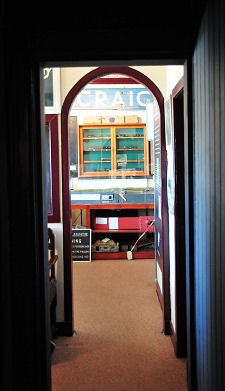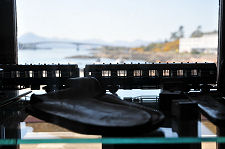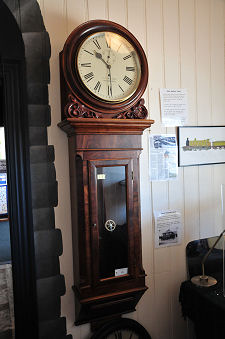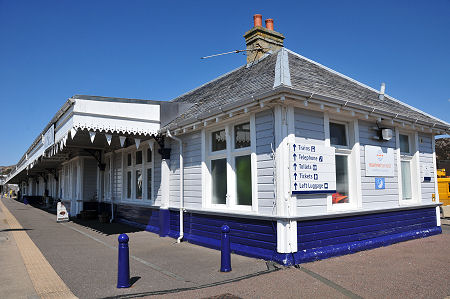 Kyle of Lochalsh Railway Station |
Kyle of Lochalsh railway station stands on its own pier, slightly apart from Kyle of Lochalsh itself, at the end of the railway line from Inverness. The 80 mile long Kyle Line from one side of northern Scotland to the other is widely regarded to be one of the world's most scenic railway journeys.
You can still catch the train to Inverness (and sometimes beyond) from Kyle of Lochalsh, and for those who have made their way here by road, there are other reasons to visit the station. These include a seafood restaurant, and the subject of this page, the Kyle Line Museum. This has been established in several rooms at the far, or southern, end of the station by the Friends of the Kyle Line, a group initially set up to save the line from closure who have since done much to publicise the line and its attractions.
The museum comprises a reception and shop, and exhibition rooms. For the attentive, there is a huge amount of historical information on display on the walls. Those of us with shorter attention spans are drawn to the large number of artefacts on display, and by the models. There's something incredibly nostalgic about old railways, and there's a lot of pleasure to be derived from simply breathing in the atmosphere and viewing the exhibits. From a personal point of view the undoubted highlight is a magnificent model of Kyle of Lochalsh railway station in the 1960s, when it had many more lines than it does today. (Continues below image...)
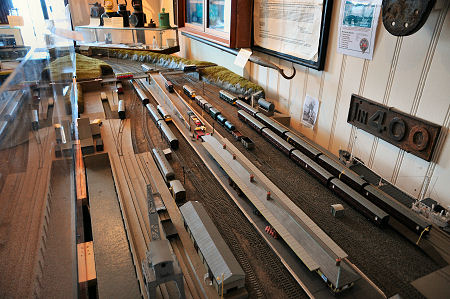 Model of the Station in Museum |
The story of the building of the Kyle Line is a long and tortuous one. The starting point was the Inverness and Ross-shire Railway, which on 11 June 1862 commenced services between Inverness and Dingwall. On 5 July 1865 Parliamentary approval was granted for the building of the Dingwall and Skye Railway. A range of objections meant that work could not begin until a further Act of Parliament had been passed on 29 May 1868. The railway line from Inverness to Stromeferry (some eight miles north-east of Kyle of Lochalsh) opened for service on 19 August 1870.
It was only 23 years later, in 1893, that work began on the final very difficult stretch south-west to Kyle itself. Those final few miles involved the building of 29 bridges and excavation of 31 cuttings, all at great cost, and it was not until 2 November 1897 that the complete line finally opened. It is perhaps worth remembering the reason for the building of the railway in the first place. Inverness was the county town of Inverness-shire, which included the Isle of Skye and the southern two-thirds of the Western Isles. Before the building of the railway the quickest way between Inverness and those outlying parts of Inverness-shire, was by train to Glasgow and then by steamer to the isles. The completion of the railway in 1897 dramatically reduced travel times.
It is perhaps surprising that such a remote rural line should have survived the coming of the age of the motor car. The Kyle Line was one of the very many identified for closure by Dr Beeching in the early 1960s, but along with a number of other railway lines in the Highlands it survived. The line was again scheduled for closure in 1970, and only reprieved in 1974. It would be nice to say that in an era, in Scotland at least, in which railways are undergoing something of a Renaissance, questions about the future of the Kyle Line had ceased. The issue has resurfaced from time to time, however, and one result of this was the formation of the Friends of the Kyle Line in 1995.
As noted at the head of this feature the Kyle Line is now rightly regarded as one of the World's great railway journeys. That doesn't mean it should be taken for granted, because nothing can ever be regarded as totally secure. Don't just visit the museum: ride the train as well and help secure its future!
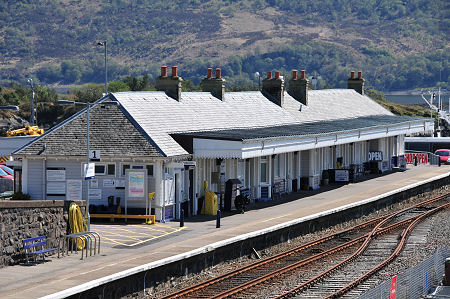 Another View of the Railway Station |

|
|
|
Visitor InformationView Location on MapRailway Station, Kyle of Lochalsh, IV40 8AQ. Tel: 01599 534824. kylerailway@googlemail.com Grid Ref: NG 762 271 Museum Web Site Opening Hours Admission Accessibility What3Words Location: ///potato.basic.rewrites |
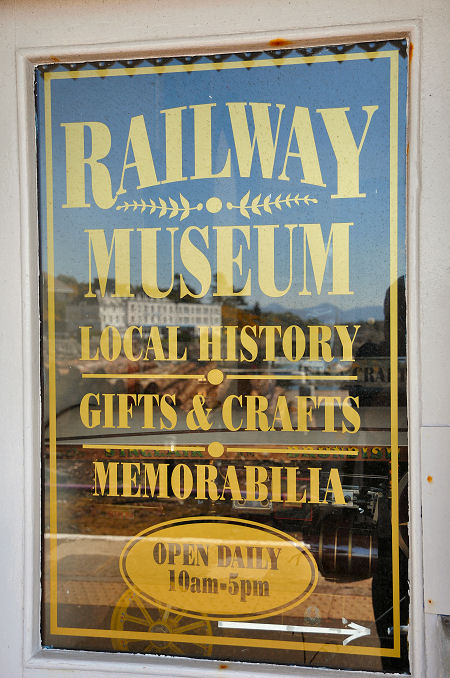 Window |
 Museum Shop |
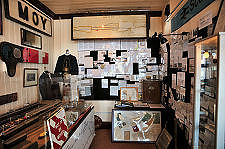 Inside the Museum |
 Lights and Lamps |
 Model Trains |
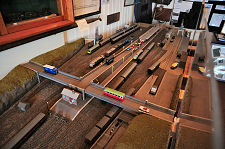 Station Model |


